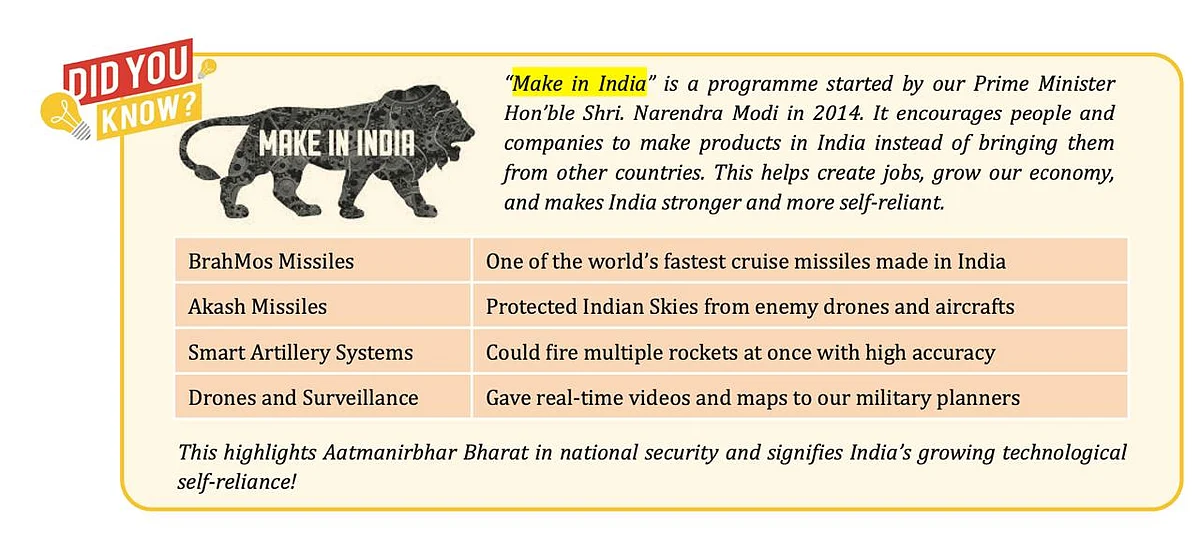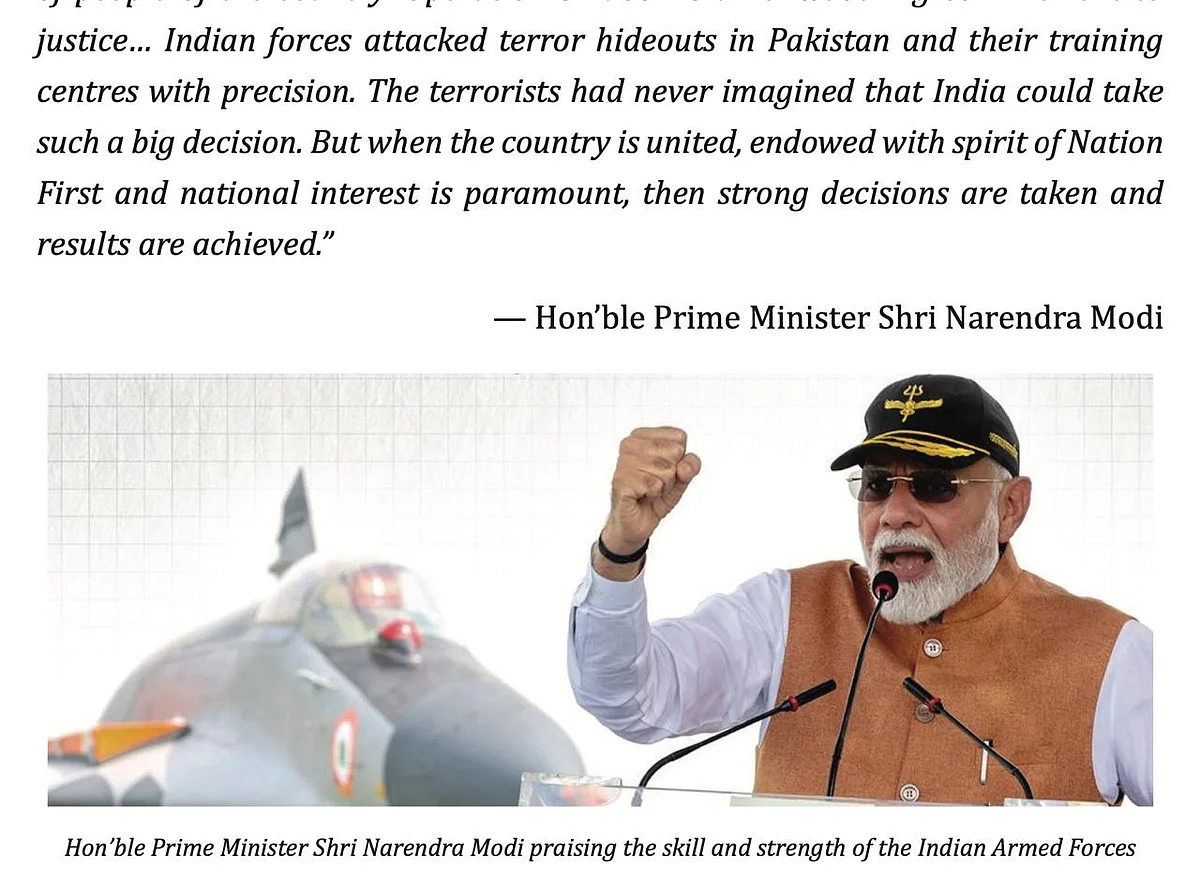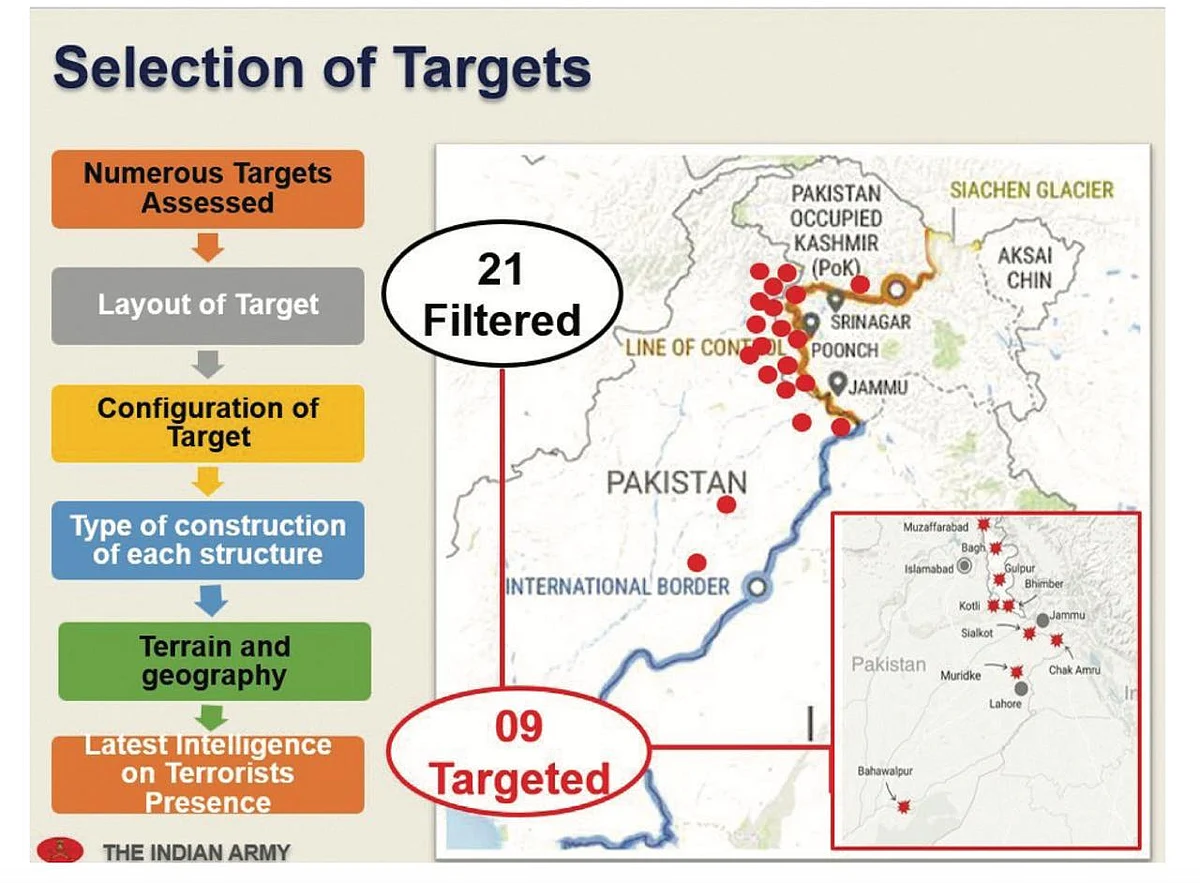NCERT’s Op Sindoor primer: Modi quotes, Make In India plug, Shah cameo
The council has introduced two modules on Operation Sindoor.
The National Council of Educational Research and Training has introduced two modules on Operation Sindoor for the preparatory, middle and secondary stages, aimed at students from class 3 to class 10.
The first module, meant for students from classes 3 to 8, opens with a classroom activity. Members of the school’s Public Speaking and Debate Club are reading newspapers when the teacher swoops in with some dramatic flair:
Teacher: Close your eyes for a moment. Picture a valley full of flowers, rivers, and happy families.
(Pause for 3 seconds)
Now… suddenly—BOOM!—a loud explosion breaks the peace. People are hurt. There is fear.
(Pause for effect)
Open your eyes. Tell me, when someone harms innocent people like this, what do we call it?
Students: (calling out) Violence! Cowardly! Terrorism!
Teacher: (nodding firmly) Yes. Terrorism is when innocent people are attacked to create fear. And should we stay quiet when this happens?
Students: No!
Teacher: (encouragingly) Exactly: That’s why India launched Operation Sindoor. It was a strong answer to a terrible terror attack in Pahalgam.

The module is replete with at least four quotes from Prime Minister Narendra Modi and a blurb explaining the significance of Make in India (launched by the prime minister, again) in making India stronger. It goes on to explain India’s military preparedness and the efficacy of the mock drills during the operation. “Our Defence Minister, Shri Rajnath Singh, said that the Indian Armed Forces were able to act quickly and effectively against terrorism because of the progress India has made in developing its own defence technology.”

Both the modules begin with a picture of PM Modi at the Adampur airbase. “The Hon’ble Prime Minister Shri Narendra Modi described Operation Sindoor as a confluence of good planning, strong leadership and quick action,” it read. The Make in India blurb is also part of both modules.
The modules state that Pakistan denied any involvement in the Pahalgam attack, but it was carried out on “direct orders” by “Pakistan’s military and political leadership”. They explain that the name Operation Sindoor was chosen as a tribute to the widows of the victims, symbolising solidarity, empathy, and respect.

The first module is titled “Operation Sindoor—A Saga of Valour” while the second is called “Operation Sindoor—A Mission of Honour and Bravery”.
The NCERT has been preparing special modules as supplementary reading material focusing on several national themes. Sixteen such modules have been released so far. They are designed to be interactive and presented as a discussion between a teacher and students.
The module for the secondary stage has a reference to Home Minister Amit Shah too:
Teacher: The Indian Army, police and paramilitary forces rushed to help immediately. The Hon’ble Home Minister, Shri Amit Shah, immediately left for Kashmir. And Prime Minister Narendra Modi cancelled a foreign visit and returned to New Delhi. He strongly condemned the attack.
As an activity question, it asks students to quote a line from PM Modi’s speech that shows India’s strong stance against terrorism.
The module also has an infographic – a table and Pakistan’s map detailing the targets of Operation Sindoor.

Under ‘Civilian Preparedness’, the textbook mentions Operation Abhyaas – mock drills, air raid sirens and blackout exercises.
A QR code at the end of the textbook opens to this tweet by the Indian Air Force. It details the history of the IAF and its contributions.
If you liked this piece, let our reporters tell you why you should subscribe to Newslaundry.
